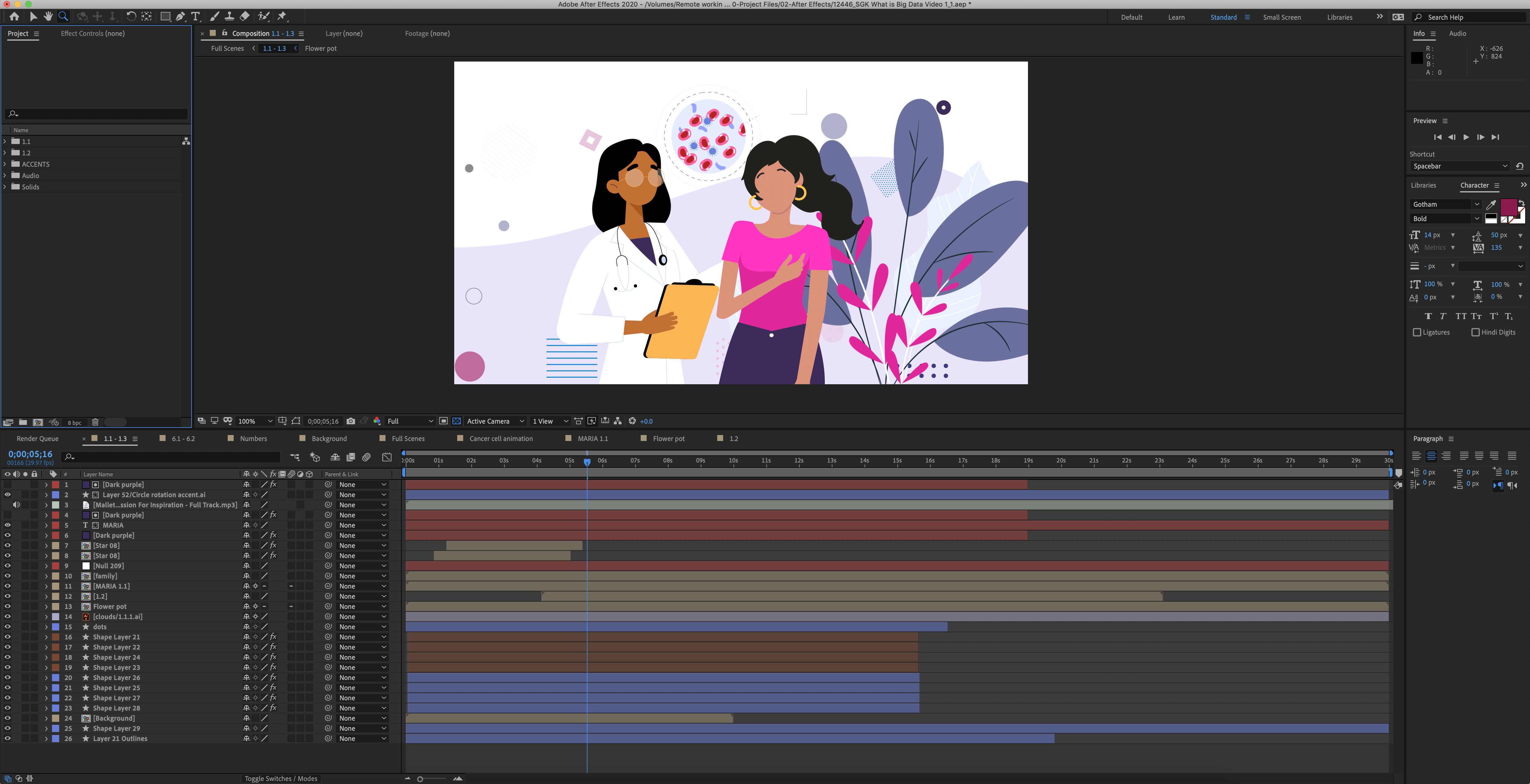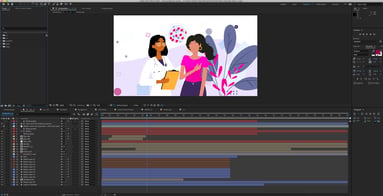
2D vs 3D: Choosing the Right Animation Style For Your Video
Studies have shown that people prefer to be marketed to using video content. In fact, 72% of consumers would rather learn about a product by way of video than any other medium (HubSpot). Video has also been proven to increase information retention, with viewers retaining 95% of a message when delivered through video (Invisa). As an organization, this is a great opportunity to provide appealing and valuable content that educates and engages your audience. With the increasing demand from consumers for video content across multiple platforms, it’s no wonder that businesses are adding video and animation to their marketing tool kits. There are many options when it comes to video, including full-production live-action filming, through to basic text and photos on-screen. Every option has its pros and cons but in this article we are going to address animated videos. Specifically, choosing between when to use 2D vs 3D. Whether it’s 2D or 3D, an important factor in creating quality video content is animation, and considering the purpose it will serve in emphasizing your product or service
But why does animation matter?

Animation can be used as a means to express more complex emotional narratives and bring a concise demonstration of an idea to your audience. The use of character animation, kinetic typography and even simple text animation can have a huge impact on the way you get your message across. High demand for video and multimedia content has forced brands to look at animation as an increasingly viable option for effectively communicating large, complicated subjects to their audience (CreativeBloq).
Knowing the basics of animation is a great reference point when determining what your next project might look like. As an organization, there are a few things to consider when deciding what type of animated video is best suited to your project.
Some questions to consider:
- What is the budget for this project?
- Will this be impactful and engaging - does it serve the goals of the business?
- What value will the audience gain from this form of content?
By answering these questions, we can start to define what type of video project to pursue. 2D animation has been an industry standard for content marketers for a long time. For everything from explainer videos, commercials, animated shorts, and more 2D animation can be a powerful way to tell your story and offers a wide variety of functionality. For example, take any strategic and well-designed set of branded graphics, couple it with fluid animation and a solid narrative, and you’ll find yourself captivated by what 2D animation can do. It is also a great alternative when filming is not possible and you are trying to communicate something that doesn’t exist naturally. 2D animation is cost-effective, versatile, and in most cases, can turn around quicker than 3D animation (of course, this is highly dependent on the scope and budget for your project needs). It is reliable and provides your video team with confidence in a straightforward process. 2D animation can also be used alongside real-time footage to increase visual interest, illustrate key points, and drive your messaging.
A few examples of 2D animation:
You may be saying to yourself, “This would be perfect! Let’s go with a 2D animated video!” But it’s important to consider the other side of this conversation before we make a final decision. What is the best method to tell your story? While 2D animation is an honest solution to your video needs, it lacks spatial depth, texture, and distinguishment; areas 3D animation makes up for, alongside its own set of advantages. This is not to say that a 2D animated video can’t deliver the same message as a 3D video, but 2D can quite literally only go as far as a 2-dimensional plane.
3D animation is sure to bring on the “ooos” & “ahhhs”. In terms of animation, the sky is NOT the limit. The number of immersive environments and creative freedom a 3D animated video can provide is abundant. But will this serve the goal of your video? Imagine this scenario: you’re promoting a product, but you want your audience to experience it as they would see it in person; with detailed depth, space, and texture. 3D animation has the capability to do this and more! You can create a fully modeled representation of your product in a 3D animated space within a video that demonstrates the functions and purpose of your product and/or service. With a 2D video, there are limits and complications in creating this same effect that 3D animation takes on seamlessly.
A few examples of 3D animation:
As you can probably tell, there is a clear difference in creative depth between having a 2D animated video & a 3D production. While this all sounds amazing and almost feels like you need to use 3D animation for your next video project, you must remember; to have this level of product requires time, strong creative direction, and a large enough budget. If any of these are lacking, you might end up with a disappointing final product.
So, which one is right for your video project?
Video animation is a tool that can help build and deliver the proper message to your audience, can easily support your ideas and initiatives, and let’s face it - is also fun. However, it’s easy to get carried away by form over function. When creating an animated short, explainer, social media video, or any other sort of video content, think about what type of visual will best serve your business objectives and drive your messages to your target audience.
Music and storytelling are also key factors in developing great content:
For more on choosing the soundtrack to your video, check out Setting The Tone: The Impact of Music Choice in Video Development
To learn more about effective storytelling, read What’s The Story: Context is Key
Have a video project in mind but not sure where to start? Contact us today to discover how our expert video team can help you choose the right animation style for your next project.






